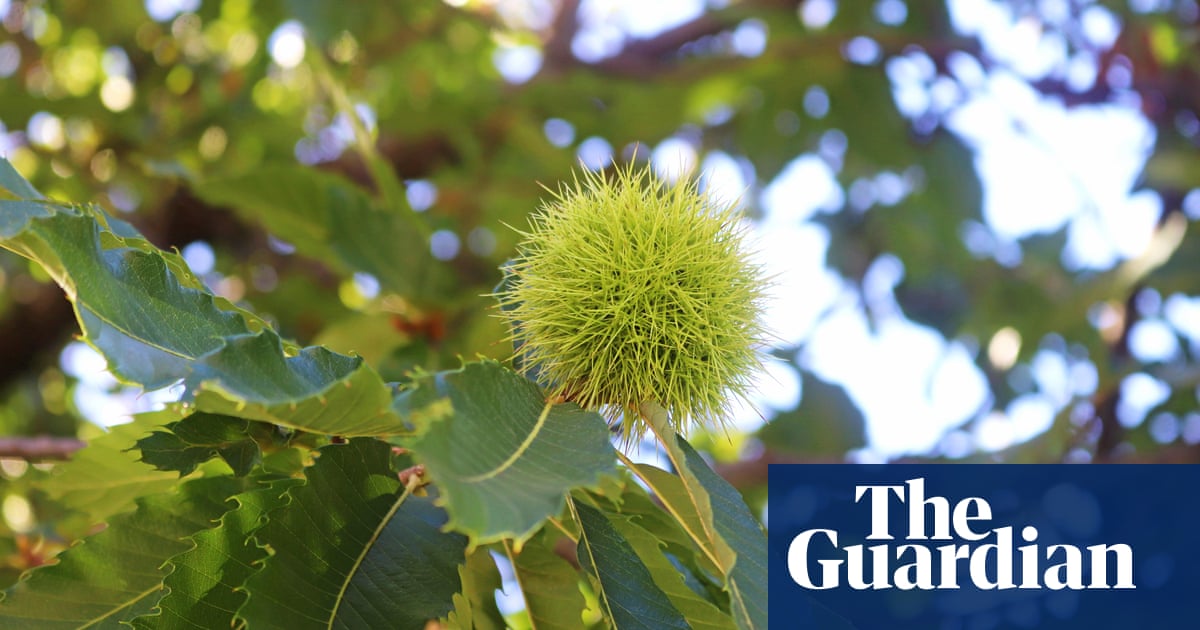
The UK’s sweet chestnuts are facing a double threat from pests and disease, and the government is calling on the public to learn to identify and protect the trees.
The trees were first recorded in Britain in the 12th century and provide food and habitat for a diverse range of wildlife. However, two problems are increasingly threatening sweet chestnuts: the oriental chestnut gall wasp (OCGW) and a fungus, chestnut blight.
The OCGW lays its eggs inside a tree’s buds, which causes galls – abnormal growths – to appear, and reduces its ability to produce nuts. The fungal disease chestnut blight can eventually kill a tree, causing cankers on its bark. Both are quickly spreading across Europe.
Government officials and the Royal Horticultural Society (RHS) have launched a campaign to teach people how to recognise a sweet chestnut and report signs of the pest and the disease.
Clues to look out for include distorted leaves or buds with swellings (galls), a sparse crown and sunken, cracking or discoloured bark.
The findings will help Forest Research scientists, who are undertaking a study into the country’s sweet chestnuts, to find the problem areas. The data will be used to create a national map of the health of sweet chestnut trees across Britain.
Nicola Spence, the chief plant health officer at the Department for Environment, Food and Rural Affairs, said: “Sweet chestnut trees – like many other plant and tree species – are increasingly vulnerable to pests and diseases. Encouraging the public to be good plant health citizens and report disease sightings is absolutely crucial if we are to minimise the risk to our cherished treescapes.”
Dr Jassy Drakulic, an RHS plant pathologist, said: “The Check a Sweet Chestnut project is a vital tool in the fight to protect tree health and provides a great opportunity for members of the public to get involved in conservation efforts. By working together to record and monitor these trees, we are helping safeguard Britain’s sweet chestnut trees for future generations to enjoy.”
How to identify a sweet chestnut tree
The Castanea sativa is a large tree, laden with yellow catkins in early summer. Its long, glossy green leaves have pointed tips, toothed edges and turn golden before falling in autumn. Mature height is 17–22 metres and trees can live for up to 700 years. They have attractive bark, distinctively jagged-edged leaves and edible nuts.












